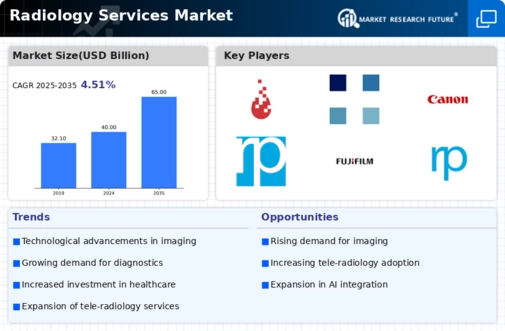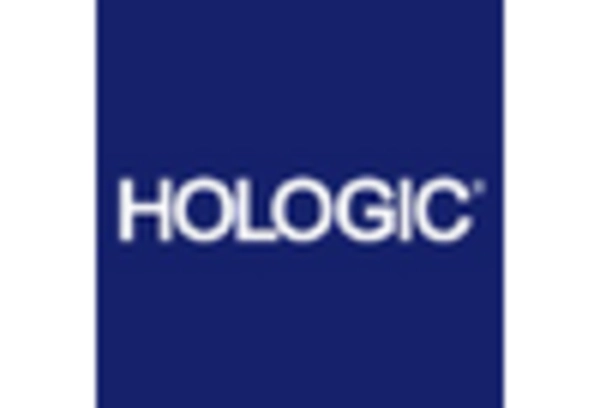Expansion of Outpatient Services
The shift towards outpatient care is significantly influencing the Radiology Services Market. As healthcare systems aim to reduce costs and improve patient convenience, outpatient imaging services are becoming increasingly popular. This trend is supported by data indicating that outpatient imaging procedures have seen a rise of nearly 20% in recent years. Facilities are adapting to this shift by offering more accessible imaging services, which not only enhances patient satisfaction but also increases the volume of procedures performed. Consequently, the Radiology Services Market is likely to experience substantial growth as outpatient services continue to expand, providing patients with timely access to essential diagnostic tools.
Regulatory Support for Imaging Services
Regulatory support for imaging services is playing a crucial role in shaping the Radiology Services Market. Governments and health organizations are increasingly recognizing the importance of diagnostic imaging in healthcare delivery. Initiatives aimed at improving access to imaging services, such as reimbursement policies and funding for advanced technologies, are likely to bolster market growth. For example, recent policy changes have expanded coverage for preventive imaging services, which may lead to an increase in patient utilization. This supportive regulatory environment is expected to encourage healthcare providers to invest in radiology services, thereby enhancing the overall capacity and efficiency of the Radiology Services Market.
Increasing Demand for Diagnostic Imaging
The rising prevalence of chronic diseases and the aging population are driving the demand for diagnostic imaging services within the Radiology Services Market. As healthcare providers seek to enhance patient outcomes, the need for accurate and timely diagnoses becomes paramount. According to recent data, the demand for imaging services is projected to grow at a compound annual growth rate of approximately 6.5% over the next several years. This trend indicates a robust expansion in the Radiology Services Market, as healthcare facilities invest in advanced imaging technologies to meet patient needs. Furthermore, the integration of artificial intelligence in imaging is likely to improve diagnostic accuracy, further fueling market growth.
Growing Awareness of Preventive Healthcare
The growing awareness of preventive healthcare is significantly impacting the Radiology Services Market. As individuals become more proactive about their health, the demand for preventive imaging services, such as screenings and early detection tests, is on the rise. Data suggests that preventive imaging can lead to earlier diagnosis and treatment, which is crucial for conditions like cancer and cardiovascular diseases. This shift in patient behavior is prompting healthcare providers to expand their imaging offerings, thereby increasing the volume of procedures performed. Consequently, the Radiology Services Market is likely to benefit from this trend, as more patients seek out imaging services as part of their preventive healthcare strategies.
Integration of Advanced Imaging Technologies
The integration of advanced imaging technologies, such as 3D imaging and molecular imaging, is transforming the Radiology Services Market. These innovations enhance the precision and effectiveness of diagnostic procedures, leading to improved patient outcomes. For instance, the adoption of 3D mammography has been associated with a 40% increase in breast cancer detection rates compared to traditional methods. As healthcare providers increasingly recognize the benefits of these technologies, investment in advanced imaging solutions is expected to rise. This trend not only supports the growth of the Radiology Services Market but also encourages ongoing research and development in imaging techniques, further enhancing diagnostic capabilities.

















Leave a Comment